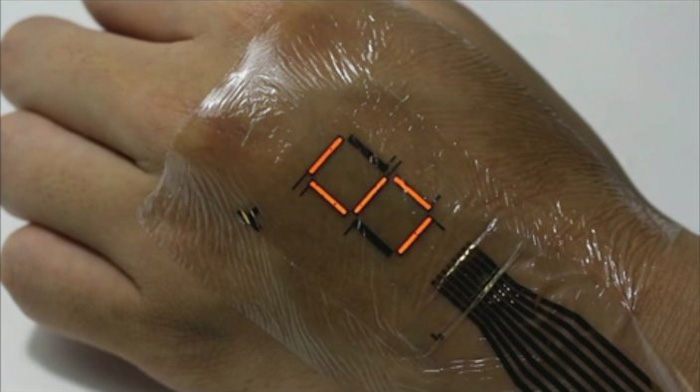Researchers have taken the concept of wearable technology to a whole new level by developing an electronic patch that transforms skin into an LED screen.
The flexible display, created by scientists at the University of Tokyo, is as thin as cling film and is described as electronic skin, or “e-skin.”
“The advent of mobile phones has changed the way we communicate,” said Takao Someya from the University of Tokyo’s Graduate School of Engineering. “While these communication tools are getting smaller and smaller, they are still discrete devices that we have to carry with us.
“What would the world be like if we had displays that could adhere to our bodies and even show our emotions or level of stress or unease? In addition to not having to carry a device with us at all times, they might enhance the way we interact with those around us or add a whole new dimension to how we communicate.”
The research, published in the journal Science Advances, describes how the technology could be used to display the wearer’s blood oxygen level or heart rate, meaning potential applications could be both medical and consumer.
To achieve the flexibility required for such a device, Someya’s team used alternating layers of inorganic (Silicon Oxynitrate) and organic (Parylene) material. This prevented oxygen and water vapour in the air from damaging the electronics.
Electronic displays have been stuck to skin before; however, the lifespan is usually only a few hours. In tests, the e-skin was able to last for several days.







Comments